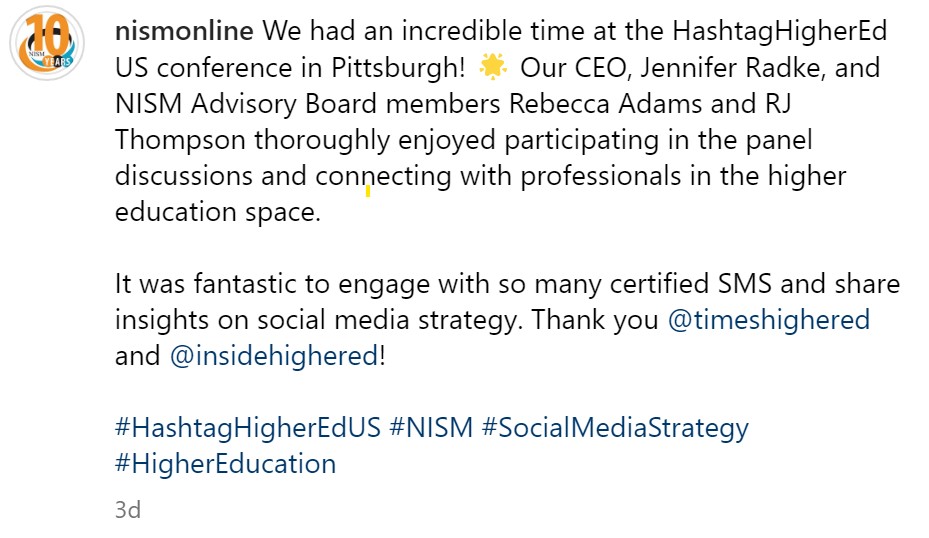People visit Instagram, the fourth largest social media platform, to connect, explore, and find inspiration in the world around them. Still, over a billion people worldwide have disabilities and they may face difficulties when interacting with content if posts are not accessible.
Making your Instagram posts accessible allows everyone to engage with your content and expands your reach to a more diverse and inclusive audience.
Here are the key steps to create accessible Instagram posts for everyone.
1. Add Alt Text to Images
Alt text or alternative text helps to make your Instagram content accessible to people with disabilities especially those who have vision impairments and rely on screen readers.
The Instagram app allows adding alt text of around 100 characters. Make sure to include all the important details describing the image within the character limit.
You can add alt text to all your images via the desktop version or mobile.
How to Add Alt Text on Instagram
Desktop
- Visit Instagram.com and log into your account.
- From the top right corner, tap “+” to create a new post.
- Upload an image from your computer and tap “Next”.
- Edit your photo (filters, etc) and click “Next” again.
- Once you reach the page where you add a post caption, navigate to the “Accessibility” option under the image preview.
- Click on the “Write Alt Text” option and type your text.
- Click “Done” and “Share”.
Mobile (IOS, Android)
- Open the Instagram app on your mobile and create a new post by tapping “+” in the right corner.
- Choose a photo from your gallery and upload it.
- Edit your photo and click “Next”.
- Scroll down and click “Advanced Settings”.
- Click “Write Alt Text” in the Advanced Settings and type your alternative text.
- Click “Done” and “Share”.
2. Provide Captions for Stories and Reels
Captions display the spoken words and sound from videos as on-screen text and provide additional details about the video and the speaker. Captions often appear as word-for-word transcriptions at the bottom or side of the Instagram Stories and Reels video.
Providing captions can significantly improve the accessibility for viewers watching without sound or those with hearing impairments who rely on screen readers. Numbers say that captions can raise the engagement rate of Instagram videos from around 5.38% to over 6.7%. This means it’s a great way to take your video marketing to a new level.
Instagram offers autogenerated captions for Stories and Reels, still, they might be inaccurate, particularly when there’s fast speech or background noise, leading to missed or misspelled words.
The good news is that you can add captions for Stories and Reels easily yourself. Here is how to do it:
How to Add Closed Captions to Instagram Stories 
- Open Instagram on your device and tap “+” to create a Story.
- Upload a video from your gallery or create a new video.
- Click the Sticker icon from the top of the screen.
- From the options displayed, choose the Captions sticker.
- Instagram will automatically generate the captions for your video.
- You can tap and edit any misspelled words or add any missing words.
- Customize the captions (font, color, placement).
- Click “Done” and Share the Story.
How to Add Closed Captions to Instagram Reels
- Open Instagram on your device and tap “+” to create a Reel.
- Upload a video for a Reel or create a new video.
- Click the Sticker icon from the top of the screen.
- From the options displayed, choose the Captions sticker.
- Instagram will automatically generate the captions for your video.
- You can tap and edit any misspelled words or add any missing words.
- Customize the captions (font, color, placement).
- Click “Done” and Share the Reel.
Here is an example of captions being used effectively by BBC Sounds on Instagram Reels.
3. Add Video Descriptions
Instagram video descriptions are important for accessibility. They describe the visual elements of a video, allowing people who can’t see the content to fully understand what’s happening beyond just the audio.
Add video descriptions to provide context for visually impaired users and those who rely on screen readers and other assistive technology.
Detailed and interesting video descriptions can help engage a broader audience by adding more context, details, or background to the visual content.
4. Provide Color Contrast
High contrast lets your Instagram feed be clearer for people with disabilities. It also helps your account stand out from competitors.
It is important to provide strong color contrast, especially for video captions keeping the font bold and highlighting the captions with a brighter color to make them more visible and easy-to-read.
When adding text to Instagram Stories or Reels, it is important to ensure the text color contrasts sharply with the background. For example, use bright text on dark backgrounds, or dark text on light backgrounds. Instagram allows adding a translucent background behind the text in Stories and Reels to make the text stand out from colorful video content.
5. Use Inclusive Language
Language matters for Instagram accessibility. It is important to write your content in a language that acknowledges different cultures, races, abilities, and backgrounds. Instagram offers an inclusive language guide that provides tips on how to craft inclusive content on the platform.
To make your Instagram language inclusive:
- Keep the sentences clear and concise.
- Apply person-first language. For example, instead of “disabled people” use the “people with disabilities” phrase.
- Don’t use words and phrases that can be offensive.
- Avoid using acronyms and abbreviations.
6. Do Not Post Important Information on Stories
Instagram Stories disappear after 24 hours. So this section is an unreliable place to share important or long-term information.
Make sure to post your important announcements, details, or critical updates on your feed, where they remain visible to your audience indefinitely.
Still, if you need to post in the Stories sections, you can consider using the Highlights feature to save Stories so users can access them later.
7. Apply CamelCase Hashtags
Hashtags are important to increase Instagram engagement. According to recent statistics, Instagram posts that include hashtags bring in 29% more interactions than those without.
When using hashtags for digital accessibility, write them in CamelCase. This means to capitalize the first letter of each word (e.g., #InstagramHashtags instead of #instagramhashtags).
These hashtags are easier to read for everyone and ensure that screen readers can correctly interpret and pronounce the words, improving access for people with visual impairments.
8. Limit the Usage of Emojis
Emojis are one of the greatest and most popular ways to express emotions on Instagram. However, be cautious with the quantity of emojis you add to your Instagram posts. Too many emojis can make your posts inaccessible.
Accessibility Engages Wider Audiences
Social media accessibility is a win-win strategy. Accessible Instagram content helps you reach wider audiences. This includes not only people with disabilities but also those who might be in environments where they can’t hear well, use sound, or need visual clarity.
Author: David Gevorkian, CEO/Founder
David started Be Accessible because of his passion for website accessibility and ADA compliance. He spent much of his career working for financial institutions creating websites and mobile applications. He earned his Master’s in Business Administration from Salve Regina University in Rhode Island. David is an advocate for creating web interfaces usable by all people. He enjoys recording music and playing soccer with friends.





0 Comments